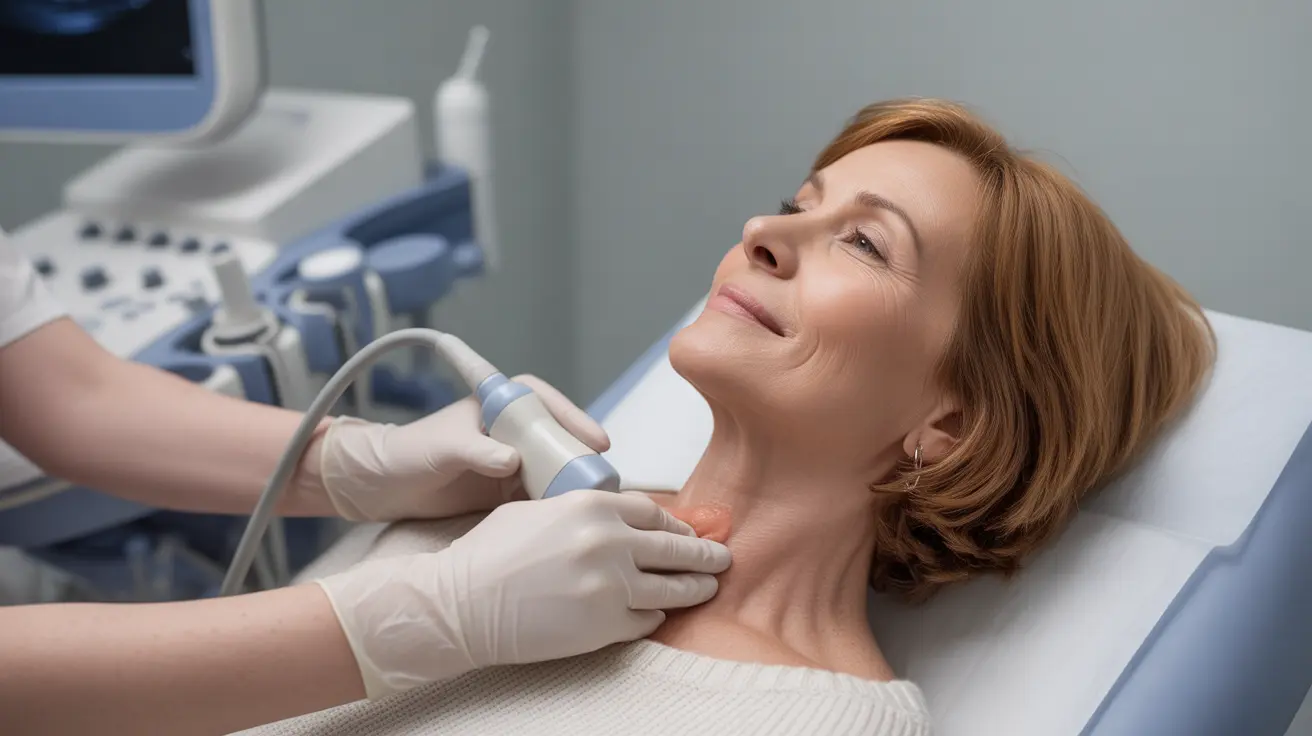A thyroid ultrasound is a non-invasive imaging procedure that helps healthcare providers examine your thyroid gland's structure and identify potential abnormalities. This safe and painless diagnostic tool uses sound waves to create detailed images of your thyroid, providing valuable information about its size, shape, and any concerning features that may require further investigation.
Understanding what happens during a thyroid ultrasound can help ease any anxiety about the procedure and prepare you for this important diagnostic test. Let's explore everything you need to know about thyroid ultrasounds, from preparation to results.
Understanding Thyroid Ultrasound Technology
Thyroid ultrasound uses high-frequency sound waves to create real-time images of your thyroid gland. The technology works by sending sound waves through a handheld device called a transducer, which both emits the waves and captures their echoes as they bounce off thyroid tissue. These echoes are then converted into detailed images that appear on a monitor.
The Thyroid Ultrasound Procedure
During a thyroid ultrasound, you'll lie on an examination table with your neck slightly extended. The technologist will apply a water-based gel to your neck, which helps transmit the sound waves. They will then move the transducer gently across your neck to capture images from different angles. The entire procedure typically takes 15-30 minutes.
Key Steps in the Process
- Positioning and preparation
- Application of ultrasound gel
- Image capture from multiple angles
- Documentation of findings
- Gel removal and cleanup
Medical Reasons for Thyroid Ultrasound
Healthcare providers may recommend a thyroid ultrasound for various reasons, including:
- Evaluating thyroid nodules found during physical examination
- Investigating unexplained neck swelling
- Monitoring known thyroid conditions
- Guiding needle placement during fine-needle aspiration biopsies
- Screening patients with high risk for thyroid problems
Preparing for Your Thyroid Ultrasound
Preparation for a thyroid ultrasound is minimal, making it one of the most convenient diagnostic procedures. You can eat and drink normally before the test, and most medications can be taken as usual. The main requirement is to avoid wearing necklaces or other jewelry that might interfere with the scanning process.
Understanding Thyroid Ultrasound Results
After your thyroid ultrasound, a radiologist will analyze the images and prepare a detailed report for your healthcare provider. The results can help identify various thyroid conditions, including:
- Nodules and their characteristics
- Thyroid gland enlargement
- Structural abnormalities
- Signs of inflammation
- Potential indicators of thyroid cancer
Frequently Asked Questions
What can I expect during a thyroid ultrasound procedure, and does it hurt? The procedure is painless and typically takes 15-30 minutes. You'll lie on an examination table while a technologist moves a gel-coated transducer over your neck. You might feel slight pressure but no pain.
How should I prepare for a thyroid ultrasound, and do I need to fast before the test? No fasting is required before a thyroid ultrasound. You can eat, drink, and take medications as usual. Simply avoid wearing necklaces or other neck jewelry to the appointment.
Why would my doctor order a thyroid ultrasound, and what conditions does it help diagnose? Doctors order thyroid ultrasounds to evaluate thyroid nodules, investigate swelling, monitor known conditions, and screen for potential problems. It can help diagnose goiter, thyroid nodules, thyroiditis, and potential thyroid cancer.
Can a thyroid ultrasound detect cancer, and what happens if a nodule is found? While a thyroid ultrasound can identify suspicious nodules that might indicate cancer, it cannot definitively diagnose cancer on its own. If a concerning nodule is found, your doctor may recommend a fine-needle aspiration biopsy for further evaluation.
What are the risks and benefits of a thyroid ultrasound compared to other thyroid tests? Thyroid ultrasound is completely safe with no radiation exposure, unlike some other imaging tests. It provides detailed images of the thyroid's structure but should be used in conjunction with blood tests and other thyroid function tests for comprehensive evaluation.




